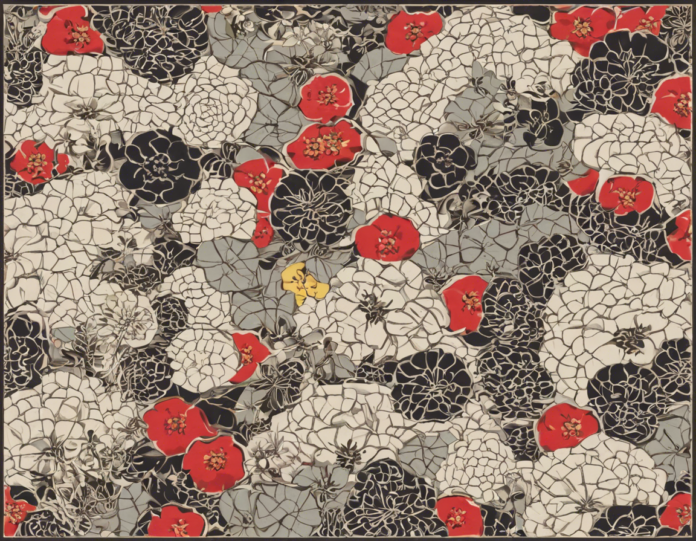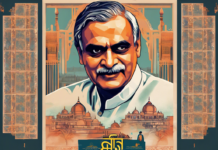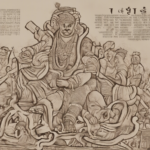Introduction
Japan and Mongolia are both countries with rich histories and unique cultures that have evolved over centuries. While Japan is an island nation located in East Asia, Mongolia is a landlocked country in Central Asia. In this article, we will delve into the cultural and historical aspects of both countries, exploring the similarities and differences that define their identities.
Historical Background
Japan has a long and storied history that dates back thousands of years. The country has been influenced by various waves of migration, including the Jomon and Yayoi peoples. In the 8th century, Japan adopted Buddhism from China, which had a profound impact on its culture and art. The samurai warrior class emerged in the medieval period, shaping the country’s feudal society. The Edo period saw the rise of the Tokugawa shogunate, which brought about a long period of peace and isolation from the outside world. In the late 19th century, Japan underwent rapid modernization and industrialization, becoming a major global power by the early 20th century.
On the other hand, Mongolia has a nomadic past characterized by the legendary Genghis Khan and the Mongol Empire, which was one of the largest empires in history. The country’s nomadic culture is deeply rooted in the vast steppes and deserts of Central Asia. Buddhism has also played a significant role in Mongolia’s history, with Tibetan Buddhism being the predominant religion. In the 20th century, Mongolia came under Soviet influence and became a communist state. The country transitioned to a democratic system in 1990 after the collapse of the Soviet Union.
Cultural Influences
Japan is known for its unique blend of tradition and modernity. Traditional arts such as tea ceremony, ikebana (flower arranging), and kabuki theater coexist with cutting-edge technology and pop culture phenomena like anime and manga. Japanese cuisine, including sushi, ramen, and tempura, has gained international acclaim for its exquisite flavors and presentation. Shinto and Buddhism are the two dominant religions in Japan, shaping its festivals, rituals, and beliefs.
Mongolia‘s culture is deeply connected to its nomadic heritage. The traditional Mongolian dwelling, known as a ger or yurt, is a symbol of the country’s nomadic way of life. The Mongolian people have a rich tradition of throat singing, a unique form of vocal music that produces multiple tones simultaneously. Naadam, a traditional festival featuring the Three Manly Games of wrestling, horse racing, and archery, is a major cultural event in Mongolia. The country’s cuisine includes hearty dishes like buuz (steamed dumplings) and khuushuur (fried meat pies).
Language and Writing Systems
The Japanese language is known for its complex writing systems, including hiragana, katakana, and kanji. Hiragana and katakana are phonetic scripts, while kanji are characters borrowed from Chinese. Japanese is also characterized by levels of politeness and honorifics that reflect the social hierarchy. In recent years, English loanwords have become increasingly common in Japanese, especially in the realm of technology and pop culture.
In contrast, the Mongolian language uses the Cyrillic alphabet, a legacy of Soviet influence. However, Mongolian also has a traditional script known as Classical Mongolian, which is used for ceremonial purposes and in artistic contexts. The Mongolian language is known for its vowel harmony and agglutinative grammar, where suffixes are added to root words to convey meaning. The language has survived centuries of political upheaval and remains a vital part of Mongolia’s identity.
Art and Architecture
Japanese art encompasses a wide range of mediums, including ink painting, calligraphy, ceramics, and woodblock prints. Traditional Japanese architecture features pagodas, tea houses, and temples that emphasize harmony with nature. The aesthetic principle of wabi-sabi, which values imperfection and transience, is central to Japanese art and design. Contemporary Japanese artists like Yayoi Kusama and Takashi Murakami have gained global recognition for their innovative work.
Mongolian art is characterized by its vibrant colors and intricate designs, often inspired by nature and mythology. Thangka paintings, which depict Buddhist deities and scenes, are a prominent form of Mongolian art. Traditional Mongolian architecture includes palaces, monasteries, and stupas, which are adorned with intricate carvings and paintings. The influence of Tibetan Buddhism is evident in Mongolian art and architecture, with many religious buildings serving as repositories of spiritual knowledge and artistic expression.
Frequently Asked Questions (FAQs)
1. Are Japan and Mongolia geographically close to each other?
Japan and Mongolia are not geographically close, with Japan located in East Asia as a group of islands and Mongolia situated in Central Asia as a landlocked country.
2. What are some popular cultural exports from Japan and Mongolia?
Japan is known for exporting anime, manga, sushi, and technology products, while Mongolia is famous for throat singing, traditional festivals like Naadam, and nomadic culture.
3. How do the languages of Japan and Mongolia differ?
Japanese uses a mix of hiragana, katakana, and kanji scripts, while Mongolian employs the Cyrillic alphabet and Classical Mongolian script.
4. What are some key historical events that have shaped Japan and Mongolia?
In Japan, events like the Meiji Restoration, World War II, and the post-war economic miracle have been pivotal, while Mongolia’s history has been influenced by the rise and fall of the Mongol Empire, Soviet rule, and its transition to democracy.
5. How do traditional arts in Japan and Mongolia reflect their cultural heritage?
Traditional arts like tea ceremony and kabuki theater in Japan and throat singing and thangka painting in Mongolia serve as expressions of cultural values, aesthetics, and spirituality.
6. What are some similarities between Japanese and Mongolian cuisines?
Both Japanese and Mongolian cuisines feature dishes with hearty flavors, such as dumplings in Japan (gyoza) and Mongolia (buuz), as well as a focus on fresh ingredients and seasonal produce.
7. Is Buddhism a major religion in both Japan and Mongolia?
Yes, Buddhism has played a significant role in the religious and cultural practices of both Japan and Mongolia, with different sects and practices observed in each country.
Conclusion
In conclusion, Japan and Mongolia offer fascinating insights into the interplay between history, culture, and identity. While Japan’s blend of tradition and modernity has captivated the world, Mongolia’s nomadic heritage and spiritual practices continue to evoke a sense of wonder and discovery. By exploring the unique characteristics of these two countries, we gain a deeper appreciation of the diverse tapestry of human experience that spans continents and centuries.












